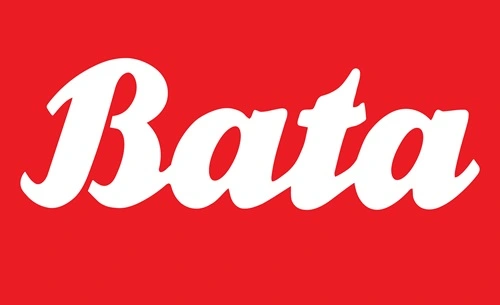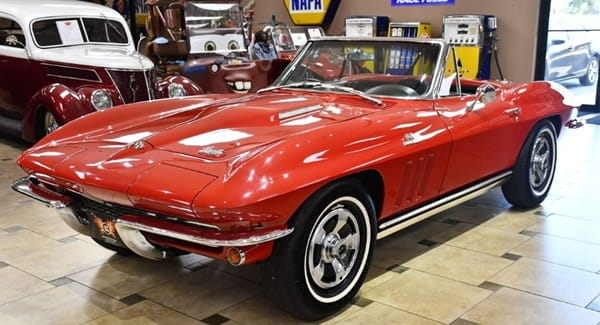Bata India, a subsidiary of the Switzerland-based Bata Corporation, has been a household name in India for over 85 years. Known for its affordability, quality, and extensive retail presence, Bata has been a leader in the Indian footwear market, offering a diverse range of shoes catering to multiple demographics. From school shoes and everyday wear to formal shoes and sportswear, Bata’s brand has become synonymous with reliability and value for money. However, as India’s footwear industry becomes increasingly competitive and consumer preferences shift, Bata faces both opportunities and challenges. This SWOT (Strengths, Weaknesses, Opportunities, Threats) analysis explores Bata India’s current position and provides insights into its future outlook in the evolving footwear market.

Strengths
1. Strong Brand Recognition and Customer Trust:
Bata has established itself as one of the most trusted footwear brands in India, known for offering durable, comfortable, and affordable shoes for a broad consumer base. Over the years, the brand has built a reputation for quality and value, making it a preferred choice among Indian consumers. This brand loyalty and recognition give Bata a competitive edge over newer entrants in the market.
2. Extensive Retail Network and Reach:
With over 1,500 retail stores across the country, Bata has one of the largest retail networks in India’s footwear sector. This extensive presence enables Bata to reach customers in urban, semi-urban, and even rural areas. Its wide reach across various regions allows Bata to capture a large customer base and ensures high brand visibility. Additionally, Bata has made significant inroads into Tier 2 and Tier 3 cities, where branded footwear is gaining popularity, enhancing its accessibility.
3. Diverse Product Portfolio:
Bata offers a comprehensive range of footwear that includes school shoes, formal shoes, casual wear, sportswear, and accessories. The brand caters to men, women, and children across various price points, allowing it to serve different consumer demographics. Bata’s broad product portfolio, which includes well-known brands like Hush Puppies, North Star, and Power, enables it to capture multiple market segments and meet diverse consumer needs.
4. Strong Financial Backing and Operational Efficiency:
As a subsidiary of a global corporation, Bata India benefits from robust financial support and global expertise. Bata’s access to resources and economies of scale enables it to maintain competitive pricing while ensuring profitability. The company’s operational efficiency, including a streamlined supply chain and production capabilities, has helped it remain resilient even in challenging economic conditions.
Weaknesses
1. Limited Presence in the Premium Segment:
Despite its strong foothold in the mid-range and affordable segments, Bata has a limited presence in the premium footwear segment. The company’s association with budget-friendly footwear, while beneficial for mass appeal, restricts its ability to attract high-income consumers who are willing to pay more for luxury or designer footwear. This limited appeal among premium customers could be a missed opportunity, especially as India’s affluent class continues to grow.
2. Overdependence on Brick-and-Mortar Stores:
While Bata has an extensive retail network, its overreliance on physical stores is a potential drawback, especially as consumer preferences shift toward online shopping. Although Bata has made efforts to enhance its digital presence, the company’s e-commerce sales still contribute a smaller portion of its overall revenue compared to traditional retail. This reliance on brick-and-mortar stores limits Bata’s ability to fully capture the growing demand for online shopping and reach digitally savvy customers.
3. Slow Pace of Innovation and Product Refresh:
Bata has faced criticism for a relatively slow pace of product innovation compared to competitors who regularly introduce new styles, designs, and limited-edition collections. Bata’s conservative approach may hinder its appeal among younger consumers who seek trendier and more diverse options. To remain competitive, Bata needs to enhance its product development efforts and respond more quickly to emerging fashion trends in the footwear industry.
4. Perception as an Old-Fashioned Brand:
Despite efforts to modernize, Bata continues to be perceived by some as an “old-fashioned” brand, primarily catering to functional and conservative styles. This image can be a disadvantage when targeting younger consumers who are drawn to trendy and contemporary brands. Rebranding efforts and more modern product lines will be essential to enhancing Bata’s appeal among younger, fashion-conscious customers.
Opportunities
1. Growth in Online Shopping and E-Commerce Expansion:
With India’s e-commerce market growing rapidly, Bata has an opportunity to strengthen its online presence and capture demand from digital shoppers. By investing in its own e-commerce platform and partnering with popular online marketplaces like Amazon, Flipkart, and Myntra, Bata can reach tech-savvy consumers across urban and rural areas. Expanding its e-commerce presence and leveraging data analytics for personalized marketing can also help Bata tap into new customer segments.
2. Rising Demand for Athleisure and Comfort Footwear:
The demand for athleisure and comfortable footwear has been on the rise, driven by trends like work-from-home, fitness awareness, and lifestyle changes. Bata’s existing brands, such as Power for sports footwear and Comfit for comfort-focused designs, provide a foundation to capitalize on this trend. By expanding its athleisure and comfort lines, Bata can appeal to health-conscious consumers looking for versatile, everyday footwear that combines style and functionality.
3. Expansion into Tier 2 and Tier 3 Cities:
With increasing disposable incomes and a growing preference for branded footwear in Tier 2 and Tier 3 cities, Bata has a substantial opportunity for expansion in these regions. The brand’s affordability and strong retail network give it a competitive advantage in reaching customers in smaller towns. By launching targeted marketing campaigns and tailoring its product offerings to suit regional preferences, Bata can further strengthen its foothold in these high-potential markets.
4. Collaborations and Partnerships for Trendy Collections:
Collaborating with designers, influencers, and fashion brands to introduce limited-edition collections can help Bata enhance its brand appeal among younger consumers. Strategic partnerships for special-edition collections or trendy product lines can boost Bata’s image as a contemporary and fashion-forward brand. Collaborations can also generate excitement and attract new customers who may not traditionally associate Bata with style.
Threats
1. Intense Competition from Domestic and International Brands:
Bata faces intense competition from both domestic players like Relaxo and Liberty and international brands like Adidas, Nike, and Puma. Additionally, newer entrants like Woodland, Metro Shoes, and global fast-fashion brands have introduced competitive offerings in India’s footwear market. This competitive landscape requires Bata to continuously innovate, maintain competitive pricing, and invest in marketing to retain its market share.
2. Changing Consumer Preferences and Demand for Sustainable Products:
Consumers, particularly younger demographics, are increasingly interested in eco-friendly and sustainable products. This shift in preference poses a challenge for Bata, which has limited offerings in sustainable footwear. Competitors that offer environmentally-friendly options may gain an advantage among eco-conscious customers. Bata needs to introduce more sustainable materials, eco-friendly packaging, and transparent practices to align with this growing trend.
3. Economic Slowdowns and Impact on Consumer Spending:
As a company with a large focus on the affordable segment, Bata is particularly sensitive to economic cycles. Economic slowdowns, inflation, or unemployment can reduce discretionary spending, impacting demand for footwear. Economic uncertainty can also increase operational costs, especially with rising input costs for materials like leather, rubber, and synthetic fibers. Managing these cost pressures while maintaining affordability is essential for Bata’s financial stability.
4. Regulatory Challenges and Compliance Costs:
The footwear industry in India is subject to a range of regulations, including product quality standards, import restrictions, and tax requirements. Any changes in regulatory policies or increased compliance requirements can impact Bata’s operations. Moreover, the Indian government has imposed restrictions on imports of certain materials, which could affect Bata’s supply chain and production costs if not managed proactively.
Future Outlook
The future outlook for Bata India is optimistic, given its strong market position, brand recognition, and expansive retail network. As the Indian footwear market grows, driven by rising incomes, urbanization, and lifestyle shifts, Bata is well-positioned to capture demand from both urban and rural customers. The brand’s established presence in affordable footwear gives it a distinct advantage in reaching price-sensitive consumers, while its diverse portfolio enables it to cater to a wide range of tastes and preferences.
To leverage emerging trends, Bata must strengthen its e-commerce capabilities and expand its online presence. With more consumers shopping online, investing in digital marketing, personalized advertising, and a user-friendly website will be critical. Bata’s recent steps toward digital transformation indicate its commitment to this area, but continued investment will be necessary to attract and retain digital-first customers.
Bata’s focus on athleisure, comfort, and casual footwear also aligns well with current consumer preferences. Expanding its lines for athleisure and comfort footwear will enable Bata to capture demand from health-conscious and lifestyle-oriented customers. Additionally, increasing its presence in Tier 2 and Tier 3 cities through new retail outlets or franchise models will help Bata reach untapped markets with high growth potential.
However, Bata must address challenges related to brand perception, competition, and sustainability. Updating its brand image and launching trendy, fashion-forward collections will be essential to enhance its appeal among younger consumers. Collaborations with designers or influencers can further modernize Bata’s image and make it more relevant to fashion-conscious customers.
Investing in sustainable practices and eco-friendly products will also be essential as consumers become more environmentally conscious. By introducing more sustainable footwear lines, recyclable packaging, and ethical sourcing practices, Bata can align itself with global sustainability trends and appeal to eco-conscious buyers.
In conclusion, Bata’s strengths in brand trust, retail reach, and diverse products position it well to capture growth in India’s evolving footwear market. By focusing on digital transformation, sustainability, and product innovation, Bata can adapt to changing consumer preferences and secure long-term growth. With a balanced approach to affordability, modern design, and sustainability, Bata India is well-prepared to navigate challenges and strengthen its position as a leading footwear brand.

